- United States
- Wyoming
- The small Geyser Hill loop: between geysers and hot springs

Geyser Hill is a small area near the Old Faithful parking lot, which is part of Upper Geyser Basin. It is composed of several rather active geysers, hot springs and other geothermal phenomena. Geyser Hill can be visited thanks to a small loop of 1 km on wooden pontoons.
After passing Old Faithful Geyser, the main path crosses the peaceful Firehole River and leads to the small Geyser Hill (well, I would say a promontory because the elevation is very low). After the river, you will notice the fork with the path that goes towards Observation Point and Solitary Geyser on your right.
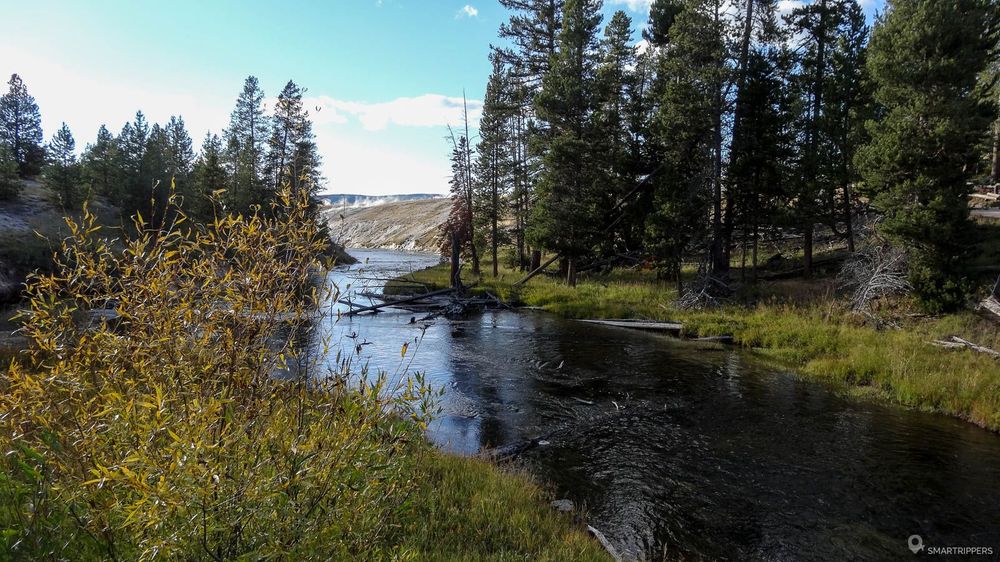
From here, wooden pontoons begin and take us to discover very nice geysers and strange geothermal formations. Bacteria can also be observed in the runoff.
Feel free to use your camera in macro mode to take beautiful and fascinating pictures!
Giantess Geyser - Eruptions 2 to 6 times/yearThe visit begins with Giantess Geyser, a small violent geyser that erupts between 2 and 6 times a year, propelling water between 30 and 61 meters! If you feel the ground shaking, it may be that an eruption is coming! But most of the time, it's pretty quiet that you'll find out.
Pump Geyser - Small permanent eruptions and Sponge Geyser - BoilingA little further, we pass in front of the small Pump Geyser, almost in permanent eruption but causing only small splashes, a little like its neighbour, Sponge Geyser, another small geyser which was formerly a little more active with small eruptions reaching 30cm but which today does not cause a big bubbling.
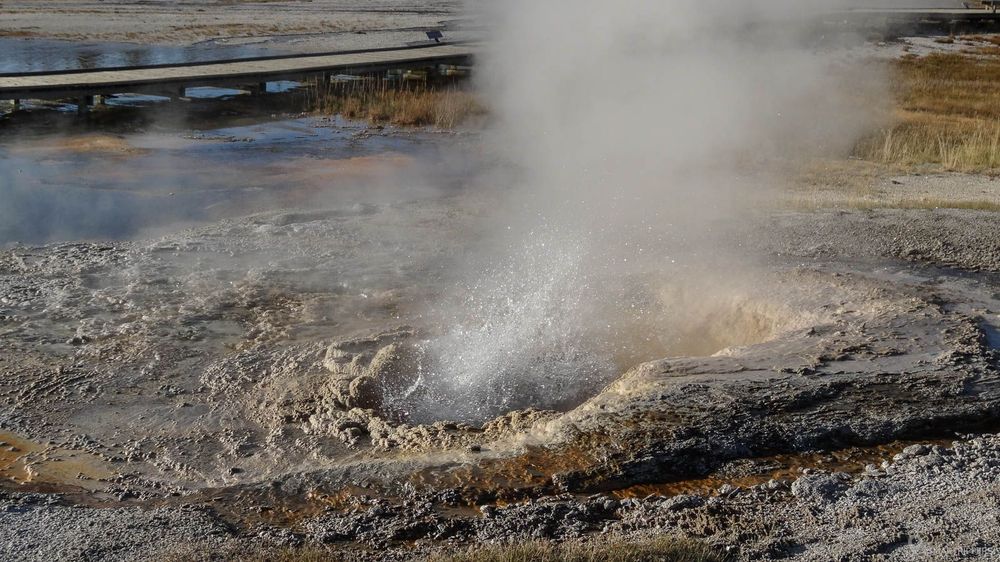
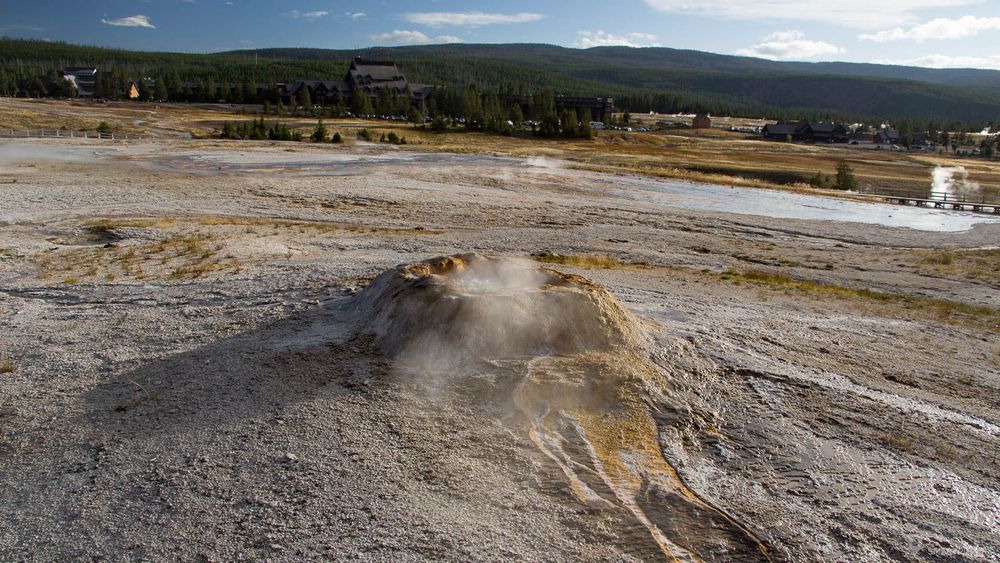
To the right of Sponge Geyser and behind Pump Geyser you will notice a pretty ochre colouring coming from a mat of bacteria having taken up residence in the warm water flows of the zone. If you look closely, you'll see like big orange mushrooms.
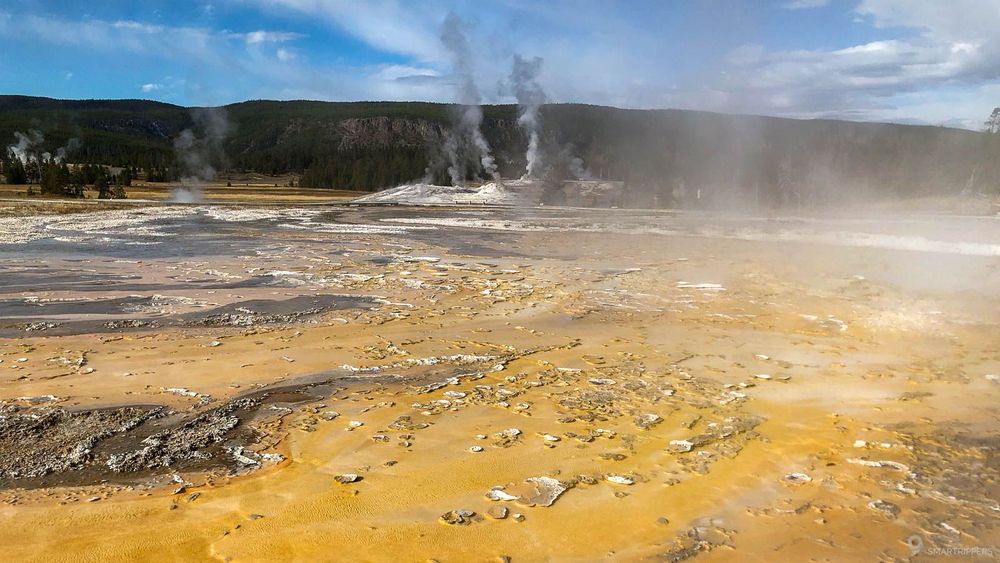
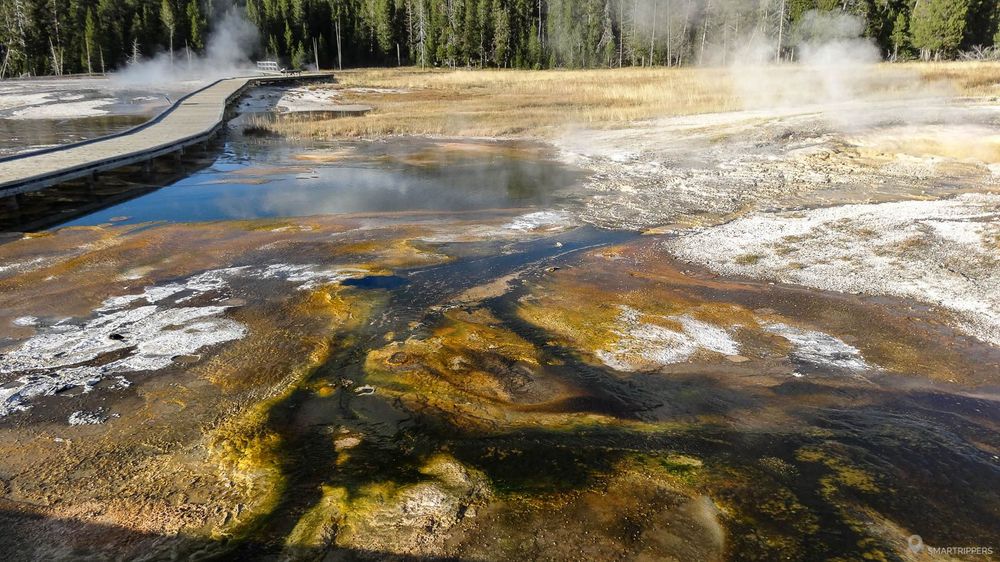
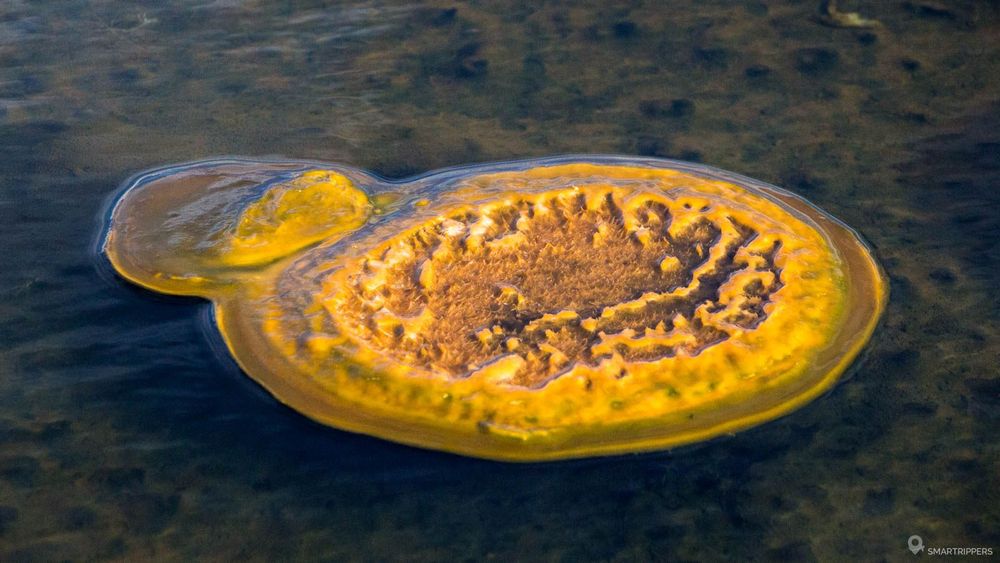
Then we pass Doublet Pool, a warm spring with beautiful light blue tints formed by two small pools that meet in the middle.
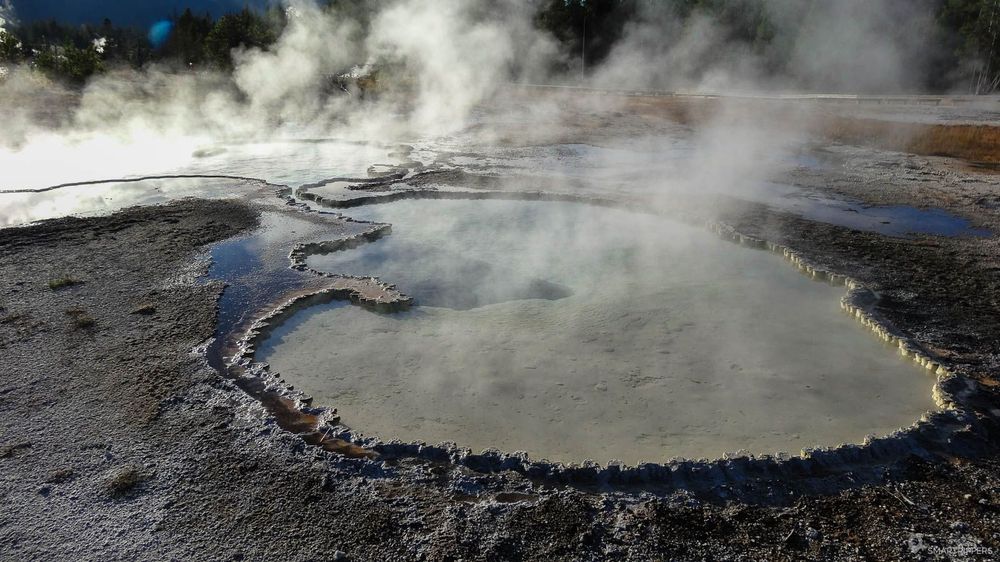
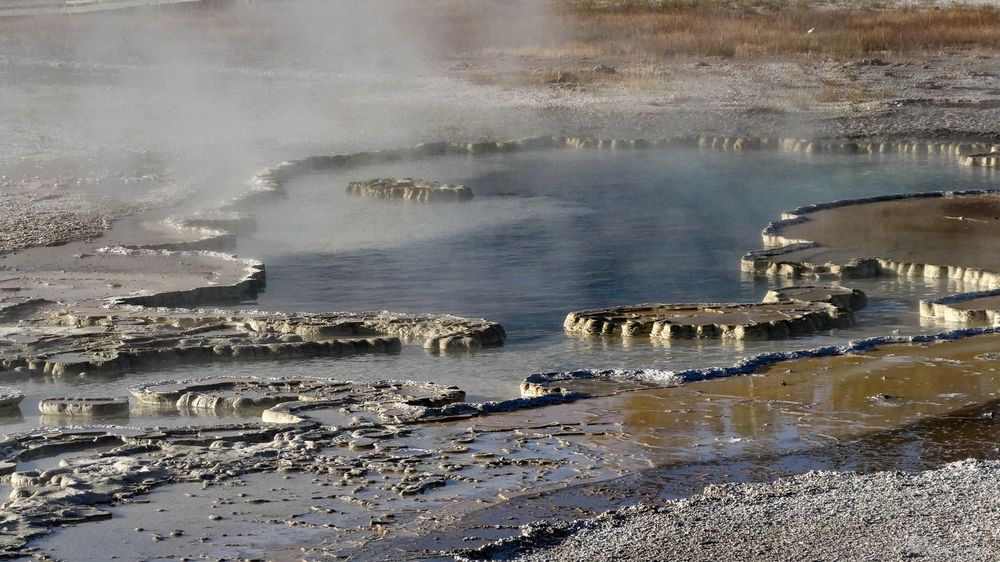
A little further on, we reach Aurum Geyser and Beach Spring. Aurum Geyser is a rather regular small geyser, causing a 4 to 7 meter jet for 90 seconds every 3 to 7 hours.
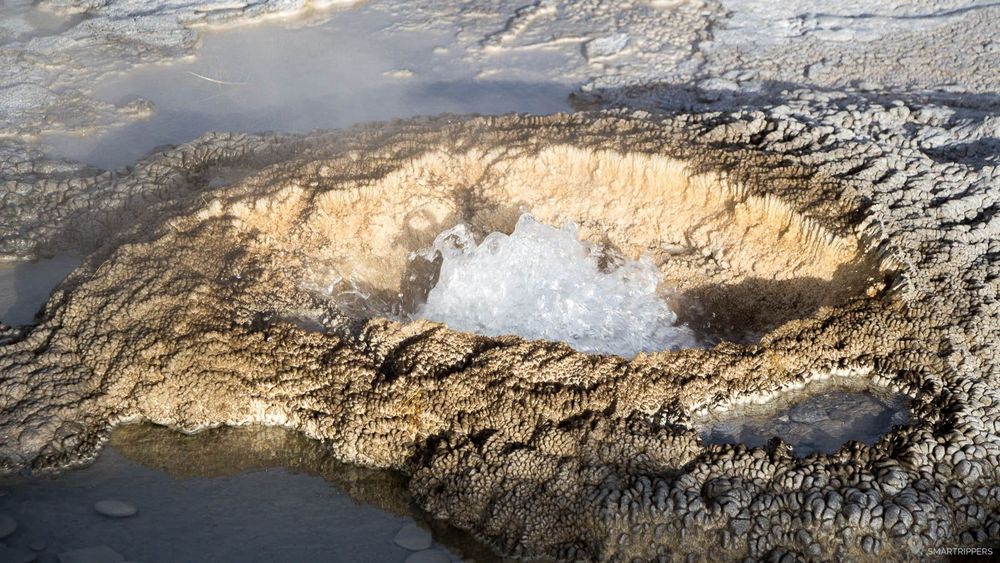
Then Beach Spring is a small, quiet hot spring in the middle of a round hole with thick edges.
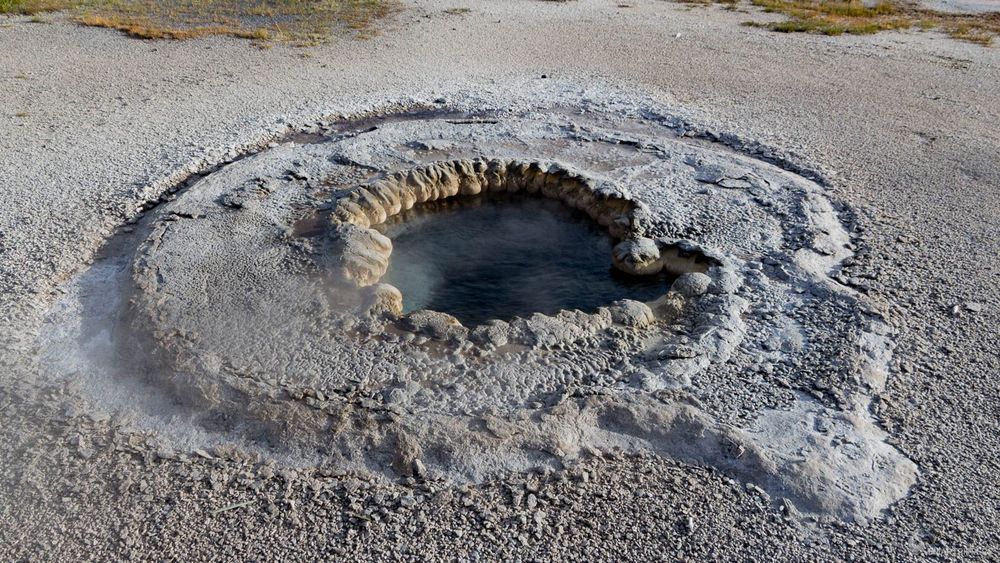
The pontoons continue to cross the whitish ground area. We will leave on our right the path which leads to Solitary Geyser, then a little further the one which leaves in direction of the central zone of Upper Geyser Basin.
Lion Geyser - Eruptions several times a dayWe now arrive at Lion Group, a small group of 4 geysers, the largest of which is Lion Geyser who regularly causes a series of several eruptions expelling water up to 27 meters for a few minutes.
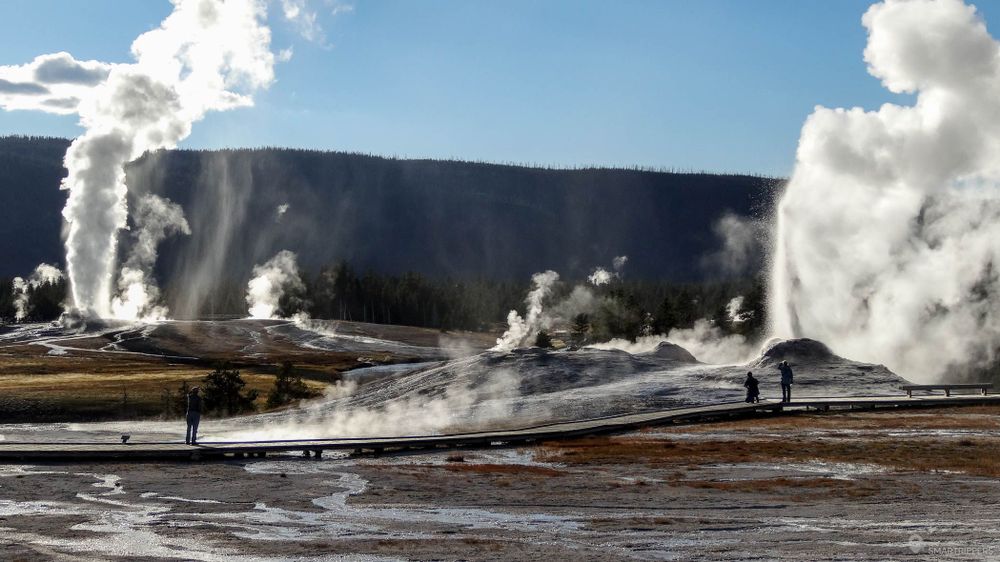
A little further away is Heart Spring, a beautiful warm blue-green spring in the shape of a human heart.
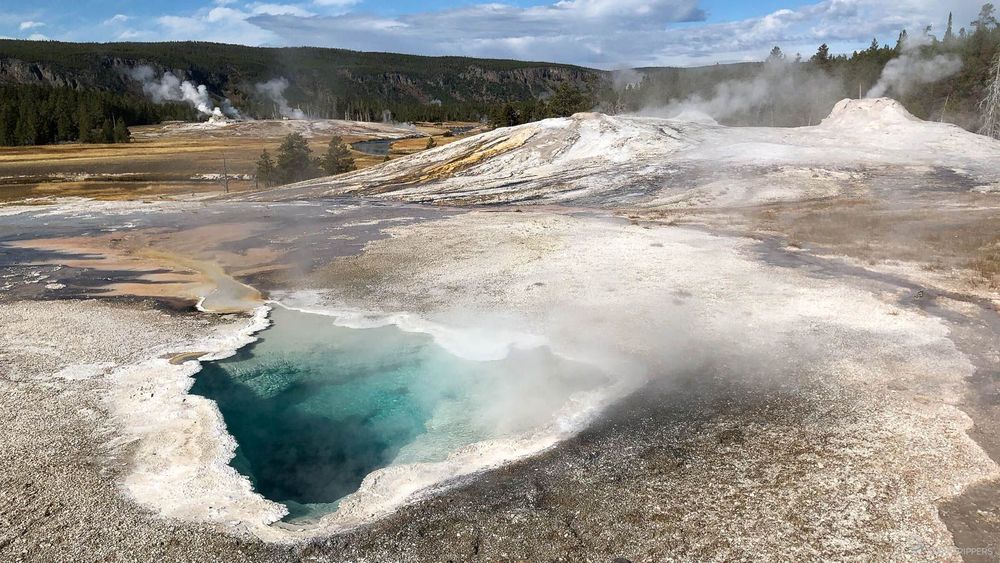
We now arrive near Beehive Geyser and Plume Geyser. Beehive Geyser is remarkable with its small conical base of 1m20 which erupts every 8 to 24 hours producing a jet going up to 61 meters during nearly 5 minutes!
Plume Geyser - Eruptions every 20 minutesAs for Plume Geyser, it propels water to 8 meters every 20 minutes! Normally, you should be able to see it at least once (unlike us who missed it, not having had knowledge of the information)!
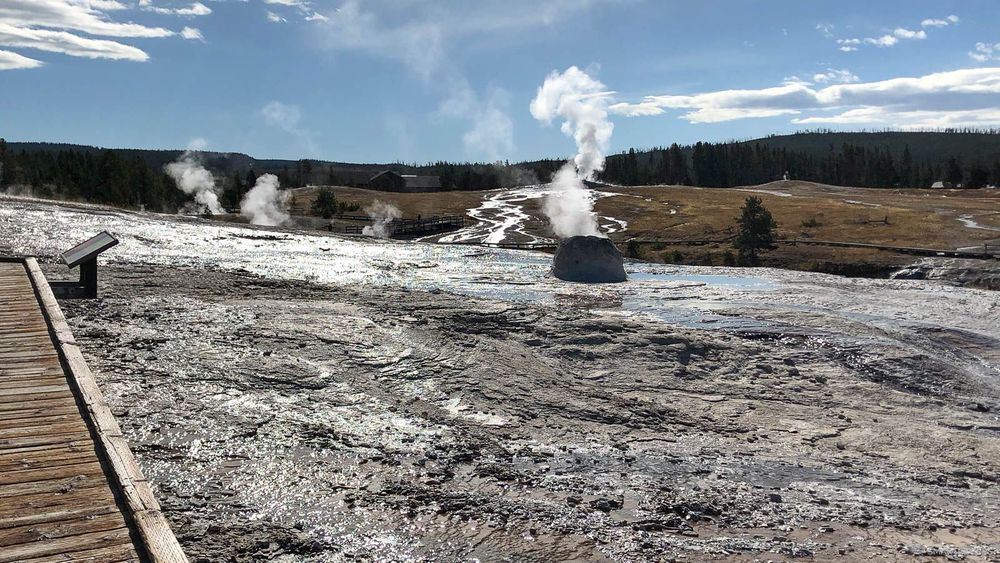
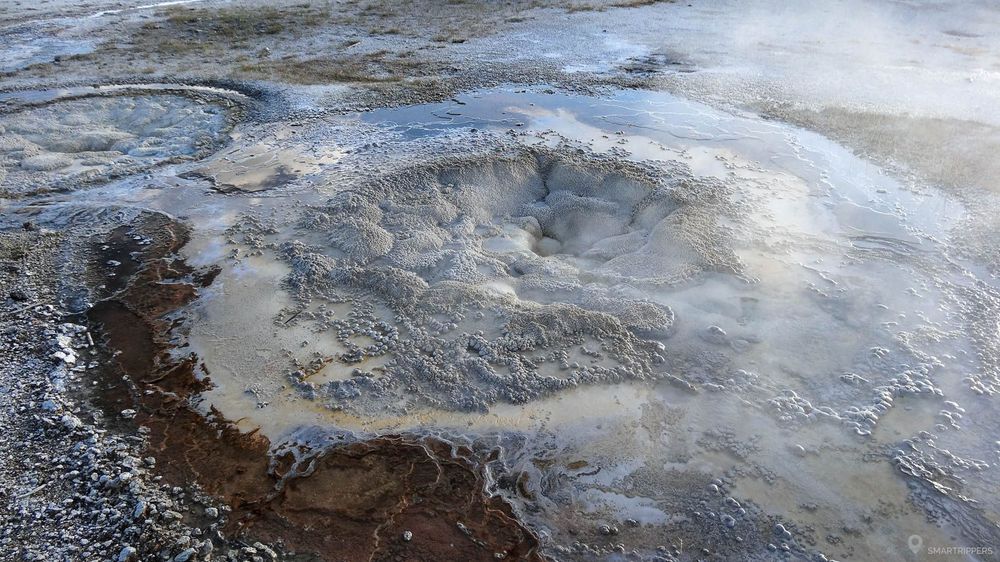
Finally, the loop ends with Anemone Geyser, a kind of small nervous geyser located at the bottom of a rather pretty round cavity. Finally, in reality they are two, two small geysers very close: Big Anemone for the biggest and Little Anemone for the smallest. Their eruptions reach between 1 and 2 meters and occur every 6 to 10 minutes for Big Anemone and every 6 to 35 minutes for Little Anemone. Sometimes Little Anemone is in permanent eruption, which decreases the frequency of Big Anemone eruption. There is also a good chance that you will see them erupting as you pass.
That concludes the visit to Geyser Hill. From the north of the loop, it is possible to join other geothermal phenomena by continuing towards the center of Upper Geyser Basin.
Summary
Geyser Hill is a small area near the Old Faithful parking lot, which is part of Upper Geyser Basin. It is composed of several rather active geysers, hot springs and other geothermal phenomena. Geyser Hill can be visited thanks to a small loop of 1 km on wooden pontoons.
After passing Old Faithful Geyser, the main path crosses the peaceful Firehole River and leads to the small Geyser Hill (well, I would say a promontory because the elevation is very low). After the river, you will notice the fork with the path that goes towards Observation Point and Solitary Geyser on your right.

From here, wooden pontoons begin and take us to discover very nice geysers and strange geothermal formations. Bacteria can also be observed in the runoff.
Feel free to use your camera in macro mode to take beautiful and fascinating pictures!
Giantess Geyser - Eruptions 2 to 6 times/yearThe visit begins with Giantess Geyser, a small violent geyser that erupts between 2 and 6 times a year, propelling water between 30 and 61 meters! If you feel the ground shaking, it may be that an eruption is coming! But most of the time, it's pretty quiet that you'll find out.
Pump Geyser - Small permanent eruptions and Sponge Geyser - BoilingA little further, we pass in front of the small Pump Geyser, almost in permanent eruption but causing only small splashes, a little like its neighbour, Sponge Geyser, another small geyser which was formerly a little more active with small eruptions reaching 30cm but which today does not cause a big bubbling.


To the right of Sponge Geyser and behind Pump Geyser you will notice a pretty ochre colouring coming from a mat of bacteria having taken up residence in the warm water flows of the zone. If you look closely, you'll see like big orange mushrooms.



Then we pass Doublet Pool, a warm spring with beautiful light blue tints formed by two small pools that meet in the middle.


A little further on, we reach Aurum Geyser and Beach Spring. Aurum Geyser is a rather regular small geyser, causing a 4 to 7 meter jet for 90 seconds every 3 to 7 hours.

Then Beach Spring is a small, quiet hot spring in the middle of a round hole with thick edges.

The pontoons continue to cross the whitish ground area. We will leave on our right the path which leads to Solitary Geyser, then a little further the one which leaves in direction of the central zone of Upper Geyser Basin.
Lion Geyser - Eruptions several times a dayWe now arrive at Lion Group, a small group of 4 geysers, the largest of which is Lion Geyser who regularly causes a series of several eruptions expelling water up to 27 meters for a few minutes.

A little further away is Heart Spring, a beautiful warm blue-green spring in the shape of a human heart.

We now arrive near Beehive Geyser and Plume Geyser. Beehive Geyser is remarkable with its small conical base of 1m20 which erupts every 8 to 24 hours producing a jet going up to 61 meters during nearly 5 minutes!
Plume Geyser - Eruptions every 20 minutesAs for Plume Geyser, it propels water to 8 meters every 20 minutes! Normally, you should be able to see it at least once (unlike us who missed it, not having had knowledge of the information)!


Finally, the loop ends with Anemone Geyser, a kind of small nervous geyser located at the bottom of a rather pretty round cavity. Finally, in reality they are two, two small geysers very close: Big Anemone for the biggest and Little Anemone for the smallest. Their eruptions reach between 1 and 2 meters and occur every 6 to 10 minutes for Big Anemone and every 6 to 35 minutes for Little Anemone. Sometimes Little Anemone is in permanent eruption, which decreases the frequency of Big Anemone eruption. There is also a good chance that you will see them erupting as you pass.
That concludes the visit to Geyser Hill. From the north of the loop, it is possible to join other geothermal phenomena by continuing towards the center of Upper Geyser Basin.
The high concentration of geysers, hot springs and strange formations in a very small area.
The impressive colours of the orange bacterial mats.
The area is quite busy due to its immediate proximity to Old Faithfull.
We are Sandrine and Flo, French thirty-somethings. In 2019 we quit everything to live our dream, become nomads and travel around the world. We left with our baby, Lena, who was only 5 months old at the time. After a first trip around the Pacific Ocean by plane and a long 3 months stay in Hawaii, we left to discover Iceland for 3 months on board our 4WD pickup truck and truck camper. Then we continued our adventure in North America.
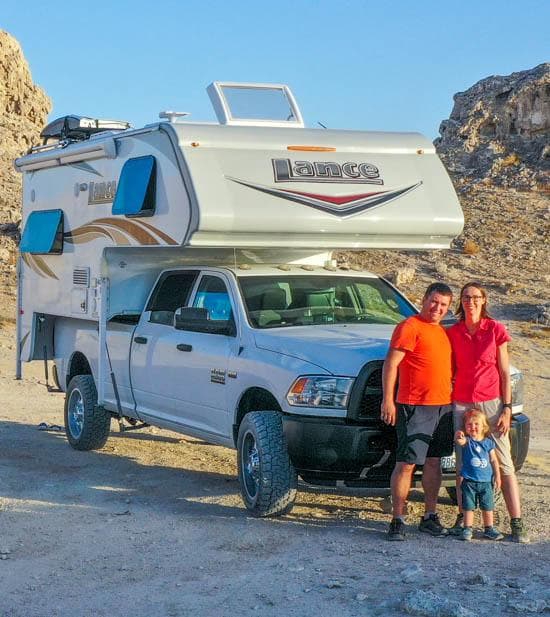
Today, if we can continue this adventure, it is above all thanks to our blog, Smartrippers! We created it one day in 2016, with the desire to share our good travel tips, without thinking that it would lead us there! We have developed it a lot over the years and have become experts on our 3 favorite destinations: Hawaii, Iceland and the American West. We now guide you to these destinations to help you plan the trip of your dreams!
Follow our adventures!